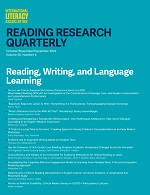Forfattere
Siri Steffensen Bratlie, Jan-Eric Gustafsson & Janne von Koss Torkildsen
Sammendrag
Language-minority students constitute a heterogeneous group, both in terms of skills in the majority language and contextual factors, such as language use at home and socioeconomic status. These characteristics may interact with the effectiveness of language instruction programs. This study investigated whether the effectiveness of a digital morphology program conducted in mainstream classrooms differed between Norwegian second-grade language-minority students (n = 188) and language-majority students (n = 521). Further, the study examined language-minority students’ latent language-literacy skill profiles. Specifically, it investigated how the skill profiles related to the students’ initial morphological word knowledge and the immediate and long-term effects of the program. Intention-to-treat analyses showed positive effects of the program on morphological word knowledge at posttest (d = 0.30) and 6-month follow-up (d = 0.27), with no evidence of group differences in program effects. For the language-minority students, a latent profile model with three language-literacy profiles emerged. All three profiles had low vocabulary compared to the full sample but differed in reading and spelling. There were significant differences between the three profiles in initial morphological word knowledge. However, the program effects were not associated with the language-literacy profiles or contextual factors. Findings suggest that language-minority students can benefit from classroom-implemented language instruction programs on an equal level as language-majority peers.
